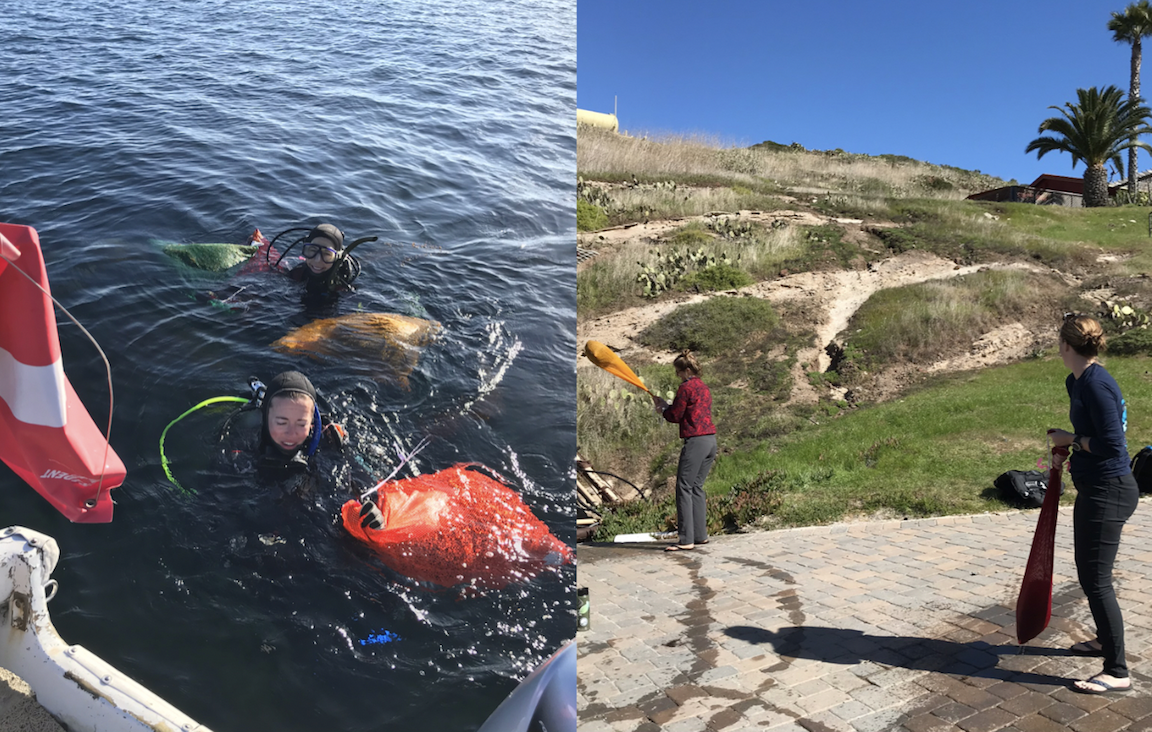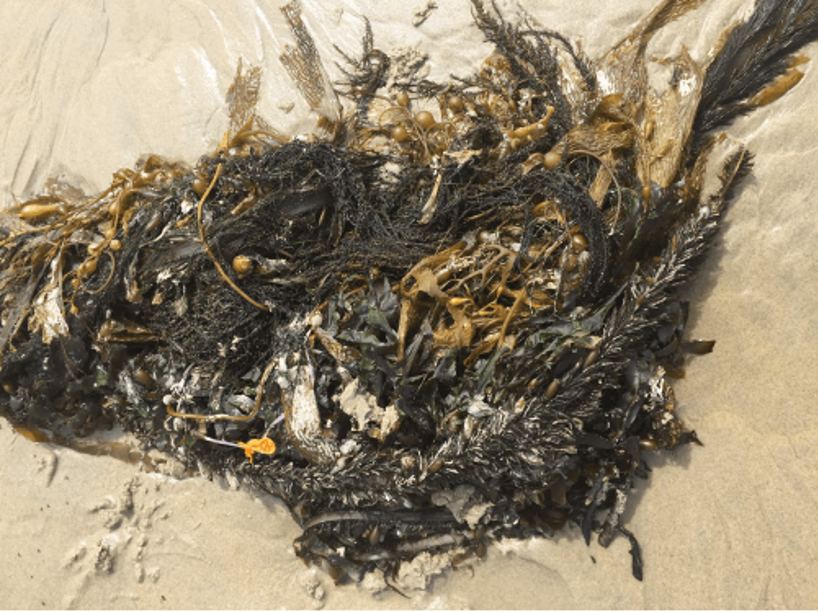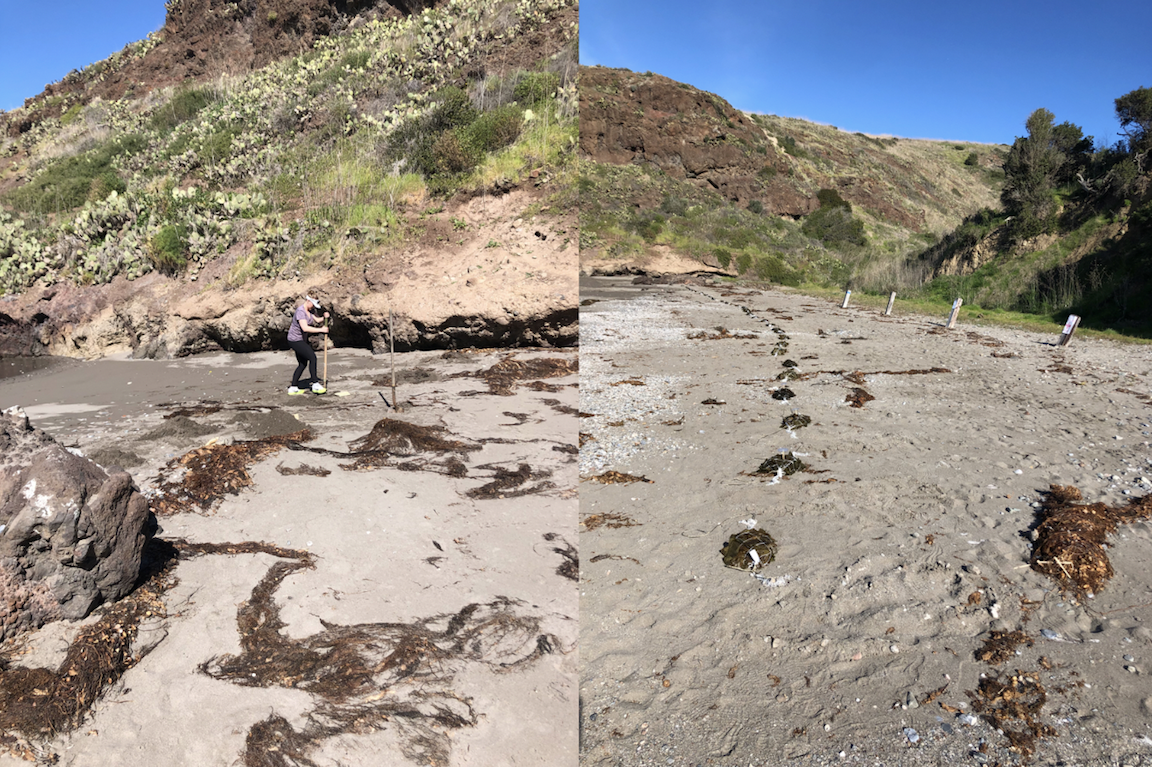By: Lauren Smith
My name is Lauren Smith and I am a PhD candidate at UCLA in the Ecology and Evolutionary Biology Department. This summer would have been my third (and likely final) summer on Catalina collecting research and I really miss it! I miss taking the Miss Christi to Wrigley bright and early, I miss discussing marine science with the other fellows, I miss the wonderful staff, and I miss the ocean.
Luckily, I was able to spend a lot of time on the island this winter and get my island fix, in fact that’s where I was when I learned that UCLA would be shutting down for the rest of the school year. I was working on a project comparing invasive Sargassum horneri with native Macrocystis pyrifera as a resource subsidy to terrestrial communities.
S. horneri is an invasive macro alga that was first found in Long Beach Harbor in 2003, since that time, it has spread to Catalina, up the coast to Santa Barbara, and into Mexico. I’m interested in exploring how this invasive is impacting California coastal communities. One way algae can impact terrestrial communities is through beach wrack as a resource subsidy. When algae become detached from the benthos it often washes up on shore and creates wracks. These wracks are important as they provide habitat for invertebrates on sandy beaches as well as trophic support.
To compare S. horneri with M. pyrifera as a resource subsidy, I needed to make my own experimental wracks. To do this, I went out with a dive buddy to collect a lot of algae. We brought the algae back to Wrigley and made sure each wrack weighed the same amount (see photo for details). Then bundled the algae together using trellis netting and took it out to the field site to begin the experiment.

Photo 1: Emily Ryznar (my fantastic dive buddy) and I collecting algae in large mesh bags
Photo 2: Emily Ryznar and I spinning algae around our heads for 1 min to get a consistent wet weight (we usually do this using a salad spinner, but needed something bigger)
At the field site we dug about 1,000 holes (ok, it was only 45…but it felt like 1,000) to anchor the algae and left them to be colonized by invertebrates. I systematically brought wrack back to the lab at different times over the next couple of weeks to compare the invertebrates found colonizing the two species. Fortunately, I was able to collect all of my wracks and their associated fauna before the shutdown! Unfortunately, I have not been able to analyze these data yet. But once the lab opens back up, I am looking forward to exploring the impact S. horneri wrack has on the sandy beach community, so stay tuned.



